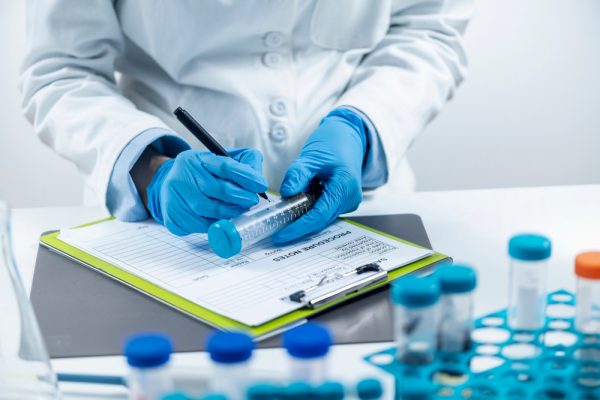In a thriving market of various cannabis-based products, it is important to consider their quality when deciding on a purchase. All stakeholders in the cannabis industry should strive to ensure the consumer is using a safe product no matter the type of application. However, the problem is that testing requirements and quality criteria are not clearly defined and harmonized in the cannabis world. This blog brings a review of parameters that need extra caution.
The cannabis plant is known to accumulate different kinds of contaminants from the environment and is therefore used for bioremediation. Contaminants present in cannabis biomass can be transferred to finished products and can also be concentrated during production processes. Common contaminants in cannabis and cannabis-based products are pesticides, heavy metals, residual solvents, and mycotoxins. Furthermore, there is a risk of microbial contamination in case of poor hygienic conditions during plant cultivation, storage, and product manufacturing. In addition to safety parameters, it is crucial to analyze the presence of cannabinoids and terpenes to determine product potency and provide reliable and consistent labeling.
PESTICIDES
Pesticides may be present in cannabis crops and extracts and can cause toxic effects if consumed. It is essential to have high-quality hemp biomass as pesticides can concentrate during extraction. There are thousands of known pesticides, so it is impossible to analyze them all. In addition, pesticide analyses are one of the hardest in the cannabis industry as matrices can be very complex. Therefore, the development of specific methods is needed for different matrices, and not all testing laboratories are able to perform such analyses and provide accurate results. Maximum residue levels (MRLs) of pesticides in or on food and feed of plant and animal origin are set in Regulation (EC) No. 396/2005. A general default MRL of 0.01 mg/kg is applied where no specific MRL has been set.
HEAVY METALS
The cannabis plant bioaccumulates heavy metals in its tissues. Heavy metals such as arsenic, mercury, lead, cadmium, and chromium can enter cannabis plants from contaminated soil. In addition, some fertilizers can contribute to the accumulation of cobalt, copper, manganese, and zinc in plants. Heavy metals cause many human diseases, so their presence in crops intended for human consumption must be minimized. Maximum levels for heavy metals in foodstuffs (e.g., food supplements and fats and oils being an appropriate category for hemp-derived products) are set in Regulation (EC) No. 1881/2006.
RESIDUAL SOLVENTS
Solvent extraction using organic solvents such as heptane, hexane, butane, propane, etc., is one of the common methods to produce cannabis concentrates, distillates, and extracts for use in different types of cannabis-based products. However, these solvents are lipophilic and harmful to health, so it is essential to test for residues as removing them completely from the extracts is hard. Maximum levels for some extraction solvents used in the production of foodstuffs and food ingredients are set in EU Directive 2009/32.
MICROORGANISMS AND MYCOTOXINS
Cannabis contamination with microorganisms such as mold, bacteria, and yeast can occur during plant growth, harvest, and storage (especially in case of poor storage conditions) as well as during production processes due to insufficient hygiene of staff, production facilities, and equipment used. In short, human handling represents an important risk for transferring human pathogens. Pathogenic microorganisms (e.g. Escherichia coli, Salmonella, Aspergillus spp.), as well as mycotoxins and aflatoxins produced by certain molds and fungi, can pose a threat to consumers. The good news is that cannabinoids produced by the external glands of the plant have antibacterial properties. Living Cannabis plants do not support high levels of bacterial growth, and pathogenic bacteria are unlikely to be associated with living Cannabis plants. Molds, on the other hand, represent a bigger quality issue in the Cannabis industry as outdoor plants are exposed to a wide variety of fungal species, and some of them are also capable of forming very resistant spores.
Many infections can be prevented by avoiding high-level replication that would lead to large infectious doses of viable cells or large doses of toxins. Many infections can be prevented by steps that kill or inactivate microbial cells (e.g., heating and drying) or microbial toxins. Good agricultural, distribution and storage practices are the best prevention of such contamination, and early detection is essential to avoid reaching fatal levels of contamination.
POTENCY TESTING
When it comes to product potency, the content of cannabinoids and terpenes is the subject of interest, as both contribute to the final effect of the product and because, in many cases, the actual composition of the products does not reflect the composition stated on the product label. Therefore, it is essential to choose a reliable manufacturer for your cannabis-based products.
References:
https://foodsafetytech.com/feature_article/page/13/
https://www.labcompare.com/Cannabis-Testing-and-Analysis/
https://www.agilent.com/en/solutions/cannabis-hemp-testing
https://link.springer.com/chapter/10.1007/978-3-319-54564-6_22
https://cdn.technologynetworks.com/tn/Resources/pdf/microbiological-safety-testing-of-cannabis.pdf






